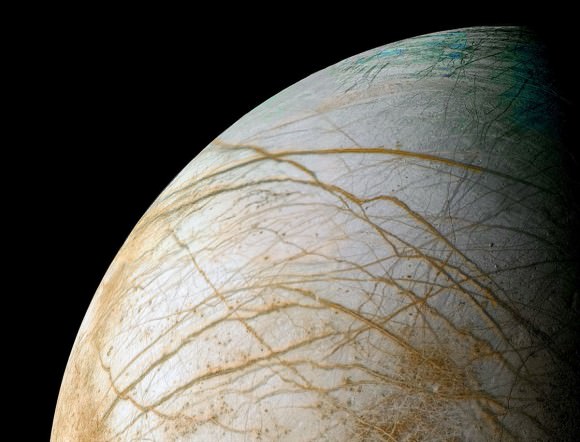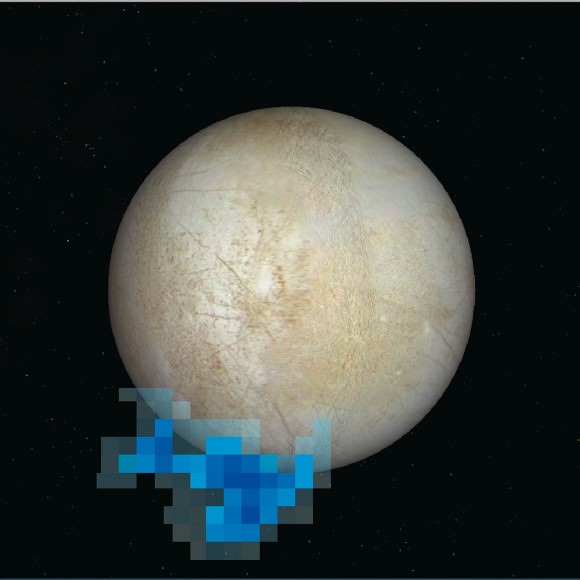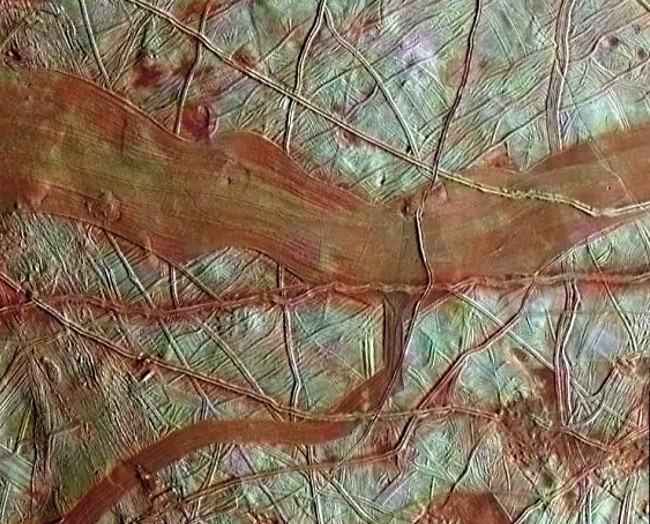What lies beneath the cracked, thick ice on the surface of Europa? NASA is hoping to fly a mission to the Jupiter moon in the coming years to see if it is indeed a promising site for life. If this concept is approved in the budget, think of the mission as a recce: NASA will either orbit the moon, or do several flybys on it, to scout the surface for science and potential landing sites.
NASA just announced its desire to have science instruments proposed for the mission. Of the submitted list, 20 proposals will be selected in a year’s time, when selectees will have $25 million to do a more advanced concept study.
“The possibility of life on Europa is a motivating force for scientists and engineers around the world,” stated John Grunsfeld, associate administrator for NASA’s science mission directorate. “This solicitation will select instruments which may provide a big leap in our search to answer the question: are we alone in the universe?”
The Europa mission is not a guarantee, and it’s unclear just how much money will be allocated to it in the long run. (NASA has requested $15 million in fiscal 2015 for the mission). The mission is also subject to budgetary approvals from Congress. If it passes all obstacles, it would fly sometime in the 2020s, according to information released with the budget earlier this year.

In April, NASA sent out a request for information to interested potential participants on the mission itself, which it plans to cost less than $1 billion (excluding launch costs).
“Recent NASA studies have focused on an orbiter mission concept and a multiple flyby mission concept as the most compelling and feasible,” the agency stated.
Besides its desire to look for landing sites, NASA said the instruments should also be targeted to meet the National Resource Council’s (NRC) Planetary Decadal Survey’s desires for science on Europa. In NASA’s words, these are what those objectives are:

- Characterize the extent of the ocean and its relation to the deeper interior;
- Characterize the ice shell and any subsurface water, including their heterogeneity, and the nature of surface-ice-ocean exchange;
- Determine global surface, compositions and chemistry, especially as related to habitability;
- Understand the formation of surface features, including sites of recent or current activity, identify and characterize candidate sites for future detailed exploration;
- Understand Europa’s space environment and interaction with the magnetosphere.
Any instruments must meet NASA’s landing scout goal or the NRC goals, the agency said. The instruments also must be highly protected against the harsh radiation in the area, and also meet planetary protection requirements to ensure no extraterrestrial life is contaminated with our own.
Just yesterday (July 15), a NASA symposium on extraterrestrial life included a musing that the agency’s unflown next-generation rocket could send a Europa mission there in three years instead of the expected seven. That said, the Space Launch System is not tested in space and it is unclear what the budgetary environment for the rocket would be in the coming years.
You can view the entire solicitation on this page. Solicitations are due Oct. 17.
Source: NASA


I’d suggest sample return only-missions. Sending aerogel passing near Europas south pole, and on a free return trajectory back to Earth. Just the aerogel, no engine or power source or electronics or instruments or landing system. It’d weigh less than a kilogram so launching it would be dirt cheap and intercepting it for collection as it returns shouldn’t require too much effort either. Could send a continuous stream of them. And to other potential plumes, rings, upper atmospheres, comet tails and what have you.
No mention of the Eroupa Clipper program? Its led by some of the original team members of Curiosity.
Name suggestion for Europa mission:
SearCH for Life on Europa Probe – acronym is SCHLEP
Why not an orbiter with a MOLA (Mars laser altimetry experiment) on it?
It could very well measure how much the icy crust gets tidally deformed and give us some useful hints about the structure bellow.
I’m aware it can require a lot of propellant to slow the probe down to get captures by Europa but…
I guess it would require too much shielding to protect a probe from Jupiter’s radiations if you would try to slow it down in the upper atmosphere, right?